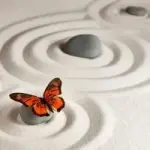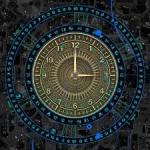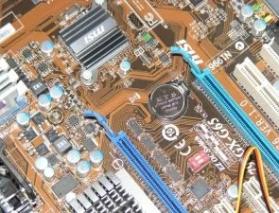 I’ve been following discussions over at the Religious Naturalist Association about the origins of life and the research by scientists Terrence Deacon and Jeremy Sherman. Their ideas are complicated, drawn from physics, chemistry, math, and philosophy. But as I’ve absorbed the basics, they have deepened my understanding of being alive. Here is the thesis: Living things probably arose as cycles in which groups of molecules self-organize and renew and reproduce themselves. Here is what I’ve learned: that similar cycles permeate all levels of living.
I’ve been following discussions over at the Religious Naturalist Association about the origins of life and the research by scientists Terrence Deacon and Jeremy Sherman. Their ideas are complicated, drawn from physics, chemistry, math, and philosophy. But as I’ve absorbed the basics, they have deepened my understanding of being alive. Here is the thesis: Living things probably arose as cycles in which groups of molecules self-organize and renew and reproduce themselves. Here is what I’ve learned: that similar cycles permeate all levels of living.
This approach to the origins of life starts with a close look at things that are not alive. Inanimate gasses, liquids, and solids all lose their molecular organization sooner or later: gas molecules disperse; liquids evaporate; solids, even rocks, eventually break down. In contrast, certain groups of molecules come together and react to each other in such a way that they don’t fizzle out or disintegrate easily. To explain, two terms need some introduction.
A catalyst is something that quickens a reaction without being changed itself. Jeremy Sherman likens a catalyst to a wheelbarrow: we can move a load of rocks more quickly and easily with one than without one and we can use the wheelbarrow again and again. Another catalyst is the chemical in the exhaust system of a car’s catalytic converter. It changes the polluting gasses from the motor into the carbon dioxide and water that leave the tailpipe, without itself ever being used up. Finally, our bodies rely on re-usable enzymes, catalysts for essential reactions such as digestion.
The other term is encapsulation—enclosing something in a capsule or other container. Enclosures are everywhere in organisms. Animals wear skin; plants encase themselves in an epidermis or bark; cells, arteries, and neurons depend on membranes and walls. Even viruses come enclosed in “capsids” that hold them together. Such boundaries keep components together and keep the outside world out (as they do in the social lives of many animals).
The scenarios that follow are my way of describing a series of reactions that would not at first, and then finally would, become active long enough for organic evolution to take hold. Different combinations of chemicals could achieve this end. But the focus in Sherman’s and related accounts is not on lab results. It is on the interactions necessary to produce cycles of stability, self-repair, and self-renewal.
The interactions here may be difficult to follow the first time through—they were for me—but hang in. It’s the beginning of life we’re talking about.
Scenario 1
Molecules of A and B, drifting in the environment, sometimes bump into each other, fit together (because molecules have shapes), and bond to form a molecule of Y. But the rate of such interactions is nothing out of the ordinary. No sign of life here.
Scenario 2
Sometimes A and B float around and come together in the presence of a molecule of a catalyst, X, which makes the bonding of A and B easier and faster as they form molecule Y. Cat X remains unchanged and goes on to facilitate the same reaction with other As and Bs nearby. But this reaction too is nothing out of the ordinary as long as catalysts are available, and it fizzles out after the As and Bs in the area are turned into Ys. Another dead end.
Scenario 3
A and B bond quickly and easily to form a molecule of Y thanks to help from Cat X. But Cat X itself, of course, is a product of some chemical reaction. Cat X, it turns out, is formed when two other molecules, M and N, bond to form a molecule of X. Cat X is a product of M and N.
Now, catalysts work only for specific reactions. Cat X bonds only A and B. So the rapid bonding of M and N requires a different catalyst. It happens that the molecule that catalyzes M and N turns out to be Y, the molecule that A and B are churning out. So Y is the catalyst that links M and N together rapidly to form X. X and Y, in other words, each serve as the catalyst for the reaction that makes the other one.
One more time: each catalyst speeds up a reaction that produces the other catalyst. Catalyst X speeds up the reaction that produces Catalyst Y that speeds up the reaction that produces Catalyst X. This is a autocatalysis (aw-toe-ka-TAL-i-sis).
So we have a rapid—in fact, an accelerating—reaction. But can it go on for very long? When the fuel molecules (A, B, M, and N) run out, so will the reaction. The catalysts will drift away. Where do we go from here? Can the catalysts be contained and refueled somehow?
Scenario 4, part a
Yes they can. A and B and M and N produce by-products, L, that tend to link with each other and form a capsule or enclosure. Such capsid formation or encapsulation is common with some large molecules. Capsids forming around a bubbling autocatalytic reaction would have an intensifying effect, at least for a while. Sherman writes:“Imagine autocatalysis occurring within a container. It would look a little like a very simple cell—a chemical population explosion occurring within something like a cell membrane.” Importantly, the container also prevents the catalysts X and Y from drifting away when they have nothing left to catalyze.
Scenario 4, part b
But any capsule left to itself will eventually break up. When that happens, the catalysts inside will float around and come in contact with new fuel molecules (A, B, M, and N) in the environment and the cycle will begin again. It’s all in the timing: the container forms in time to constrain the dispersing catalysts and breaks up in time to allow them to find new molecules to help connect.
Terrence Deacon calls these auto-generating, sometimes-enclosed, not-quite-cells autogens. Over time, as some types of autogens outnumber others, selection will favor those that carry additional refinements. A template of some kind, for example, may preserve previous sequences—an early version of DNA. And some capsules may have surfaces that are most likely to open amidst an abundance of fresh fuel molecules. As autogens persist, renew, and evolve, they grow closer to full cell status—to life.
Lessons
Such narratives of possible cycles and self-regulating reactions may seem far-fetched, but look around. From microbes to mammals, living things operate as cycles in which two processes constrain each other. We take such cycles for granted, but they constitute being alive. For example, it’s winter where I live now and plants have closed down to conserve and rest; soon they will wake and blossom, and produce hardened, closed seeds that will open the following season. We humans grow tired at night, close our bodies down into sleep, and then wake, refuel, and return to work at our biological self-repair, self-protection, re-production. Our hearts, lungs, digestive tracts and other organs fill and empty all life long, containing our processes that sustain the containers.
Sherman captures the gist of it: “Selves resist nonexistence” (192). Living things, humans included, stay busy staying alive. Being alive is our great achievement that we were born with. But I had not glimpsed the web of active and constraining phases, the magic-like catalysts and the genius of containers that are at work.
Eventually, though, I, the family dog, and the fern at the kitchen window will not be able to repeat the cycles another time. Until then, we take part in the billions of years of life tuning itself to the play of matter and energy and to the rhythms of the planet.
Learn about Membership in the Spiritual Naturalist Society
__________
The Spiritual Naturalist Society works to spread awareness of spiritual naturalism as a way of life, develop its thought and practice, and help bring together like-minded practitioners in fellowship.
Sources:
This article is based on Jeremy Sherman’s Neither Ghost Nor Machine: The Emergence and Nature of Selves, 2017. Sherman’s book, in turn, is a presentation of the insights of his mentor and friend Terrence Deacon of the University of California, Berkeley. And this approach to the origins of life was first explored by Stuart Kauffman in Origins of Order: Self-Organization and Selection in Evolution, 1993.
A central Wikipedia entry about the origins of life is “Abiogenesis.”












